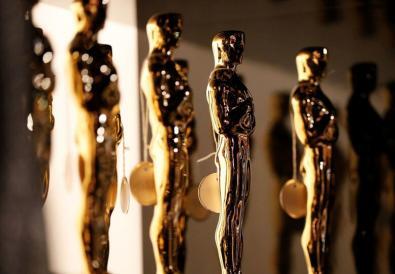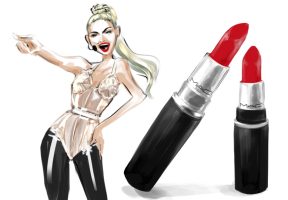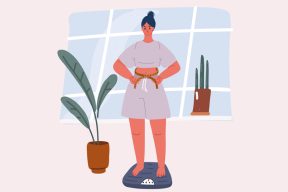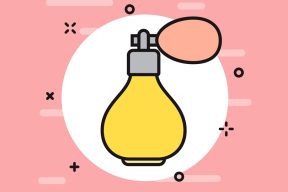By Bianca Guzzo
If you’re reading this then chances are you’ve probably been influenced by somebody to buy something. Maybe a friend was wearing a scarf you had to have for yourself. Perhaps somebody on your favourite social media app told you about drawer organizers you thought would make your life as effortlessly organized as theirs (they didn’t). Maybe a celebrity convinced you to buy a supplement or multivitamin. This is influencing and it’s completely changed the way we spend our money in the last decade. But over the last nine months “deinfluencing” has become popular on sites like Instagram and TikTok. People have grown tired of being sold items they know are overpriced or overhyped, so in an effort to help others curb their spending on unnecessary items, “de-influencers” have started telling us what trending items are and are not worth our hard-earned dollars. But this has me asking myself… is deinfluencing still influencing.
In February of 2023, popular makeup influencer Mikayla Nogueira found herself in a bit of controversy when she posted a video promoting a new mascara on her popular TikTok account. Nogueira had built a loyal following with her unfiltered reviews of cosmetics ranging from three dollar lipsticks to designer creams and serums, always letting her followers know what she felt was “the real deal”, giving her a trustworthy reputation as her follower count continued to rise. Which is why viewers were caught off-guard when the video of her applying the mascara cut to footage where she appeared to be wearing a false lash. It felt like this was a wake-up call for a lot of people who had already started questioning the intentions of certain influencers. Seeing what appeared to be a gimmick to sell a product on a sponsored post was disheartening and they started to ask themselves, what other products had they been sold that aren’t as great as they’re being told they are? The ($60 CAD) Stanley Cup that became popular amongst influencers leaked so much that people started talking about dupes that were half the price that worked twice as well. There was a $7 replacement for a $52 gel primer that looked, felt, and smelled the same. People began making entire videos filled with products that were simply not worth the hype that had also been tried and true favourites on the FYP for months. Thus, the deinfluencer was born, and much like their predecessors they started to get popular.
Of course, this doesn’t mean that we should abstain from buying anything new for all of eternity, but it also forces us to look at what we’re buying with a more critical eye, and take a more sustainable approach to our shopping habits. Techtarget.com says “deinfluencing tries to persuade consumers to limit excess waste”. Overconsumption became a social norm, especially on TikTok during the pandemic when shopping hauls of fast-fashion items and decorative knick-knacks proved to be popular among the app’s users. And it makes sense, we weren’t going anywhere, so we had some extra money to spend on frivolous purchases. Now thanks to a constantly-rising cost of living, and life mostly returning back to normal, some of us can no longer afford to spend our hard-earned dollars on a whim.
The desire for authenticity online is also a factor in why people connect with deinfluencing more and more. Canadian beauty influencer Stephanie Valentine (Glamzilla on her socials) has recently opened up various luxury beauty advent calendars to tell her audiences which ones are worth your money and which ones are just full of free samples. Her viewers trust her opinion and once they see her saying that they’re better off not buying something, her authenticity gains her even more trust from them. It would be so much easier to post about an item for pay, but her commitment to being real with her viewers is her bread and butter. Theconversation.com says the growing demand for authentic creators and content online has contributed to the popularity of the de-influencing trend and has even given influencers with smaller follower counts a unique leg-up in the constantly growing landscape of social media marketing. At the time of writing this, the “deinfluencing” tag has 950 million views on TikTok, which is impressive, but at what point does deinfluencing become just another marketing tactic?
While deinfluencing combats the constant urge to spend money on things you come across online, it is still influencing you to do something, whether it’s to buy an identical cheaper alternative or to not spend any money at all. It turns out deinfluencing is just a classic #TikTokMadeMeBuyIt style of influencing recycled and repackaged to match the current economic climate. Some say this new way of consuming curated content also helps curb burnout from the pressure of constantly keeping up with consuming and posting on socials. According to Theconversation.com this shift in how we consume influencer content matches the natural evolution of our core values, which favour transparency and genuine connections in a post-pandemic world. Even if the tone of influencing has changed from the sinister vibes a Kardashian selling appetite suppressant supplements gave us five years ago, it’s still in our best interests to carefully evaluate what we’re being sold, and how it’s being sold to us.
Social media has really become its own beast, and it’s a constantly changing landscape that can feel like a rollercoaster at times. If they’re doing a good job, an influencer can feel like a best friend, and their recommendations can feel honest. It’s easy to get swept up into trends and want to buy something in an effort to keep up. Parasocial relationships with influencers aside, there’s also value in being aware of when you’re being sold to and not just earnestly being told about a cool new product. I think I can speak for all of us when I say we’ll be ok if we don’t get another drink receptacle or run to buy the next beauty product that comes up on our FYP. Life will go on and there’ll be a new cup influencers will be pushing next week. Can you be influenced to be deinfluenced into not buying it?












